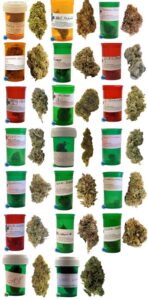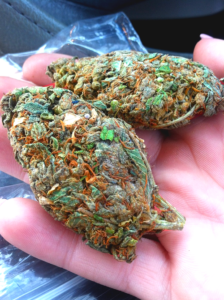
Weed in La Louvière: Legal, Social & Cultural Landscape
Located in the Walloon region of Belgium, La Louvière is a city with its own local character, history and socio‑economic profile. In this article we examine cannabis (“weed”) in La Louvière: the legal framework, how it plays out in practice, local culture, health and social issues, enforcement, risks, and implications for residents and visitors alike. Weed in La Louvière
1. Legal Framework in Belgium (and how it applies in La Louvière) Weed in La Louvière
Before delving into La Louvière specifically, it’s essential to understand how cannabis is regulated in Belgium.
1.1 National law Weed in La Louvière
- Under Belgian federal law, cannabis remains technically illegal for recreational use.
1.2 Regional & local enforcement (Wallonia, La Louvière) Weed in La Louvière
Although the law is federal, actual enforcement, policing priorities and local practices vary by region, city, and even police zone. For La Louvière (a city in Wallonia), this means:
- Local police and judicial authorities may apply the national rules (fine for ≤3 g, more serious sanctions for more or aggravating factors) but also apply local policy, community priorities and resources. For example: crack‑downs on trafficking, public nuisance, use near schools.
- Public consumption (parks, streets), consumption near minors or schools, driving under the influence, or larger amounts are more likely to trigger serious enforcement.
- Because Belgium lacks a legal regulated retail cannabis market (for recreational use), most supply remains illicit; this raises additional risks (quality, policing, criminal exposure).
In short: in La Louvière you operate under the same national rules, but with local practical realities: small personal use may be tolerated but is not legal, and the risks increase if behaviour falls outside the “low priority” zone (public, large amounts, trafficking).
2. The Reality of Use & Culture in La Louvière
Understanding how “weed” fits into the social and cultural fabric of La Louvière helps make sense of what to expect — for locals and visitors.
2.1 Prevalence & social context
- Belgium (including Wallonia) has seen increasing cannabis use over the decades. According to the health‑monitoring body Sciensano, consumption of illicit drugs including cannabis remains a public health concern.
- But because the legal market does not exist, supply is via informal networks.
2.2 Supply, access, risks
- Because there is no legal “cannabis shop” (as in the Netherlands) in Belgium, users in La Louvière must access cannabis via informal/illicit channels. This means several risks: variable quality; potential involvement with criminal networks; higher price; greater legal risk if supply/quantity suggests distribution.
- For example, in the neighbouring city of Charleroi the black market is noted as the primary source for cannabis.
2.3 Consumption patterns & culture
- Smoking in private residences remains the most common mode. In public spaces (streets, parks) people are more exposed to police, fines or confiscation.
- The absence of legal “coffee shops” means the open consumption culture
3. Key Issues & Risks
Whether you live in La Louvière or are visiting, understanding the risks associated with cannabis use in this context is vital.
3.1 Legal risks
- Even with decriminalisation of small amounts, cannabis remains illegal. If you are caught with more than the tolerated amount (≥3 g) or in aggravating circumstances (near schools, public places, with minors, dealing) you may face full criminal charges.
- Repeat offences, presence of minors, public nuisance, or commercial intent can escalate a simple possession case into a serious one.
3.2 Health & safety risks
- Because supply is illicit, quality control is absent: contamination, variable THC/CBD levels, unknown potency.
- Consumption in public places may lead to risks: driving while impaired, interactions with youth, potential for confrontation with law enforcement.
- For first‑time users or those unfamiliar with cannabis, the environment (legal uncertainty, illicit supply) adds stress and risk.
- The health‑monitoring report from Sciensano indicates broader drug‑policy consequences and underscores that even “tolerated” substances carry public‑health implications.
3.3 Social & economic issues
- Some urban districts in Wallonia (including La Louvière) face economic challenges: unemployment, youth disengagement, less opportunity. In such contexts, cannabis use may become more prevalent as form of recreation or escape — raising issues of dependency, stigma, or association with illicit networks.
- Because the supply is illegal, those buying may inadvertently support criminal networks, contributing to local crime, insecurity, or exploitation.
- Public consumption (in parks, near schools, in groups) can create nuisance for other residents, triggering complaints and heavier policing.
- Stigma persists: users may still face social judgement, especially in more traditional or older populations; this may discourage seeking help if problems emerge.
4. La Louvière – Local Picture & Practical
4.2 What to expect if you’re a user or visitor
- If you are an adult (18+), with a small amount (≤3 g) for personal use in a private setting, you may be in the less‑risky category — though still technically illegal and subject to confiscation or fine.
- Avoid smoking openly in public places (parks, streets, near schools) — this greatly increases risk of police intervention or fine.
- Do not assume legality or “Dutch coffee‑shop style” access — there are no legal licensed dispensaries for recreational cannabis in La Louvière.
- If you are buying, remember: supply is illicit so you are exposed to quality, legal risk and potential involvement with criminal networks.
4.3 Local enforcement trends
- According to local legal‑advice listings, for drug offences in La Louvière: “simple possession of cannabis for personal use by adults (up to 3 g or a plant) may be tolerated but still illegal and can result in police reporting and the seizure of substances.”
4.4 Harm‑reduction and local resources
- If you live in La Louvière and consume cannabis, apply harm‑reduction practices: use in a private, safe environment; know your source; avoid mixing with alcohol or driving; be aware of potency.
- For someone with problematic use: local healthcare providers, addiction‑services or social work may assist.
- If you’re hosting visitors: make sure they understand local law (Belgium), privacy, and avoid open display of cannabis.
- For locals: consider the broader social context — consumption is not just a personal matter, but interlinked with local economy, policing, public space, youth culture.
5. The Future of Cannabis Policy in Belgium & Impact on La Louvière
Cannabis policy in Belgium is evolving, and changes at the national or regional level will affect cities like La Louvière.
5.1 Policy debates and possible reforms
- Belgium has seen discussions of full legalisation or regulated markets, but as yet no comprehensive recreational legalisation.
5.2 What this means for La Louvière
- If Belgium were to move towards regulated recreational cannabis, La Louvière could see new business opportunities (regulated dispensaries), tax revenue, harm‑reduction programmes, but also new challenges (zoning, youth access, public consumption).
- For now, the city remains under the current “tolerated prohibition” model. Residents and local policymakers face the balancing act of managing public order, youth safety, illicit supply, while acknowledging that cannabis use is a part of urban social life.
- Local stakeholders (municipality, police, social services) may develop better harm‑reduction initiatives (education, safe spaces, addiction counselling) tailored to the Walloon context.
- Users and residents in La Louvière should monitor policy changes, as what is tolerated today could be formalised (or reversed) tomorrow — remaining informed is wise.
6. Conclusions
In La Louvière, “weed” occupies a complex space: legally prohibited yet partially de‑criminalised; socially visible yet still operating largely underground; culturally present yet not widely regulated. The local reality reflects national Belgian policy: personal use may be tolerated under certain conditions, but the absence of a legal regulated market leaves significant risks — legal, health, social.
FAQs
Q: Is it legal to have weed (cannabis) in La Louvière?
A: No — cannabis remains illegal for recreational use in Belgium. However, possession of up to 3 grams for an adult may be decriminalised (i.e., may result in a fine rather than criminal proceedings) provided there are no aggravating circumstances.
Q: What about medical cannabis in La Louvière / Belgium?
A: Medical cannabis is legal under very strict conditions: only specific medicines (such as Sativex for MS) are approved. Dried cannabis flower for general medical use is not widely authorised.
I have used Global Weedworld (Globalweedworld@galaxyhit.com) at least 4-10 times and every time it has been a top notch.
He is the best local plug you can find around. He is very pleasant, friendly and fast. He is a lifesaver.
He sells top shelf WEED and other stuffs at moderate prices. I will always recommend this guy when people ask me my ” go-to”.
All you have to do is follow his instructions.
Just send him an email and I bet you will come back for more once you finish with what you bought because his quality is amazing.
Also Contact him on his telegram link telegramhttps://t.me/GlobalweedWorld
⚠️ Know that he do not have telegram channels only the telegram link above

The strain was exactly what I was looking for. It had that perfect balance, and the high was smooth. Also, the packaging was discreet and professional. Really impressed
I’ve been buying online for a while, but this shop’s service and product quality set them apart.
Everything was fresh, potent, and the customer service is outstanding
My first purchase and I’m hooked.
Excellent product and the customer support was super helpful in answering all my questions. Highly recommend this site
From browsing to checkout, everything was seamless. Delivery was on time, and the product exceeded my expectations.
I’ll be recommending this to my friends
told me that he doesn’t accept cash and i thought he is one of those idiots who took advantages of people but i decided to give him a try by making the payment first using bitcoin, surprisingly he arrived within the time he promised me and i received what i ordered. thank you Global weed world, whenever i return here you will always be my plug without doubt.
I’ve been buying from a lot of different places, but this one stands out. The bud is top-notch, and the prices are reasonable.
Will be ordering again soon! Amazing experience! The product was exactly as described,
and the packaging was on point—safe and odor-free. Thank you!
Third order in a row — flawless. Told my friends — now they’re ordering too. This is how weed buying should be. Clean, easy, reliable.
Delivery was crazy fast, and the product… This place is setting the bar for online weed shops. Keep doing what you’re doing. You’ve got a loyal customer for life.
Best decision I made all week. Real ones know. This site is fire. I don’t usually leave reviews, but this deserved one.
I was worried about ordering online, but the packaging was perfect completely. You can tell they care about their customers. Fast replies and reliable support.